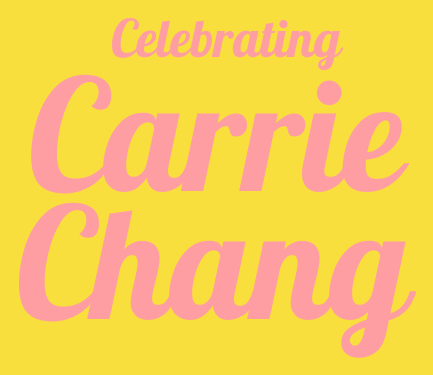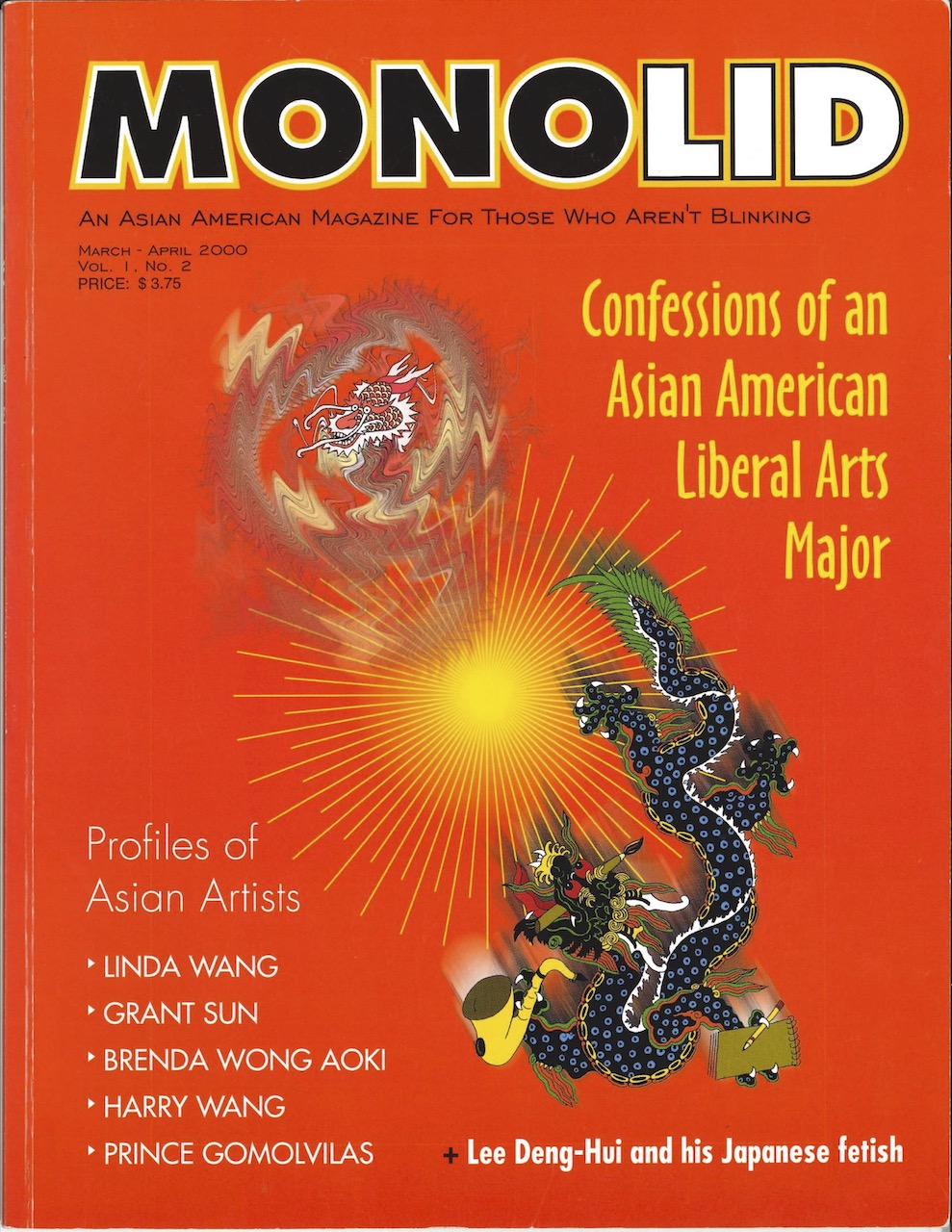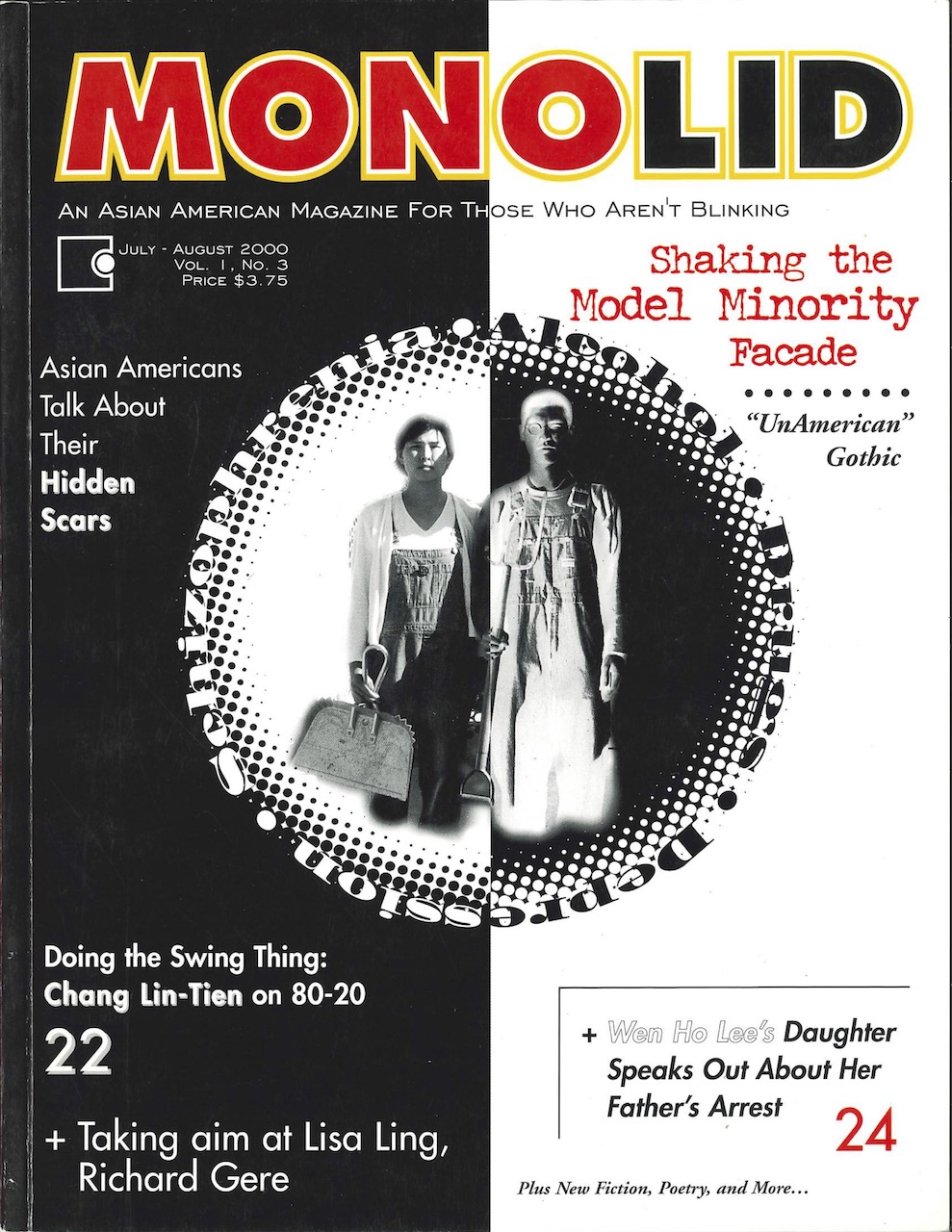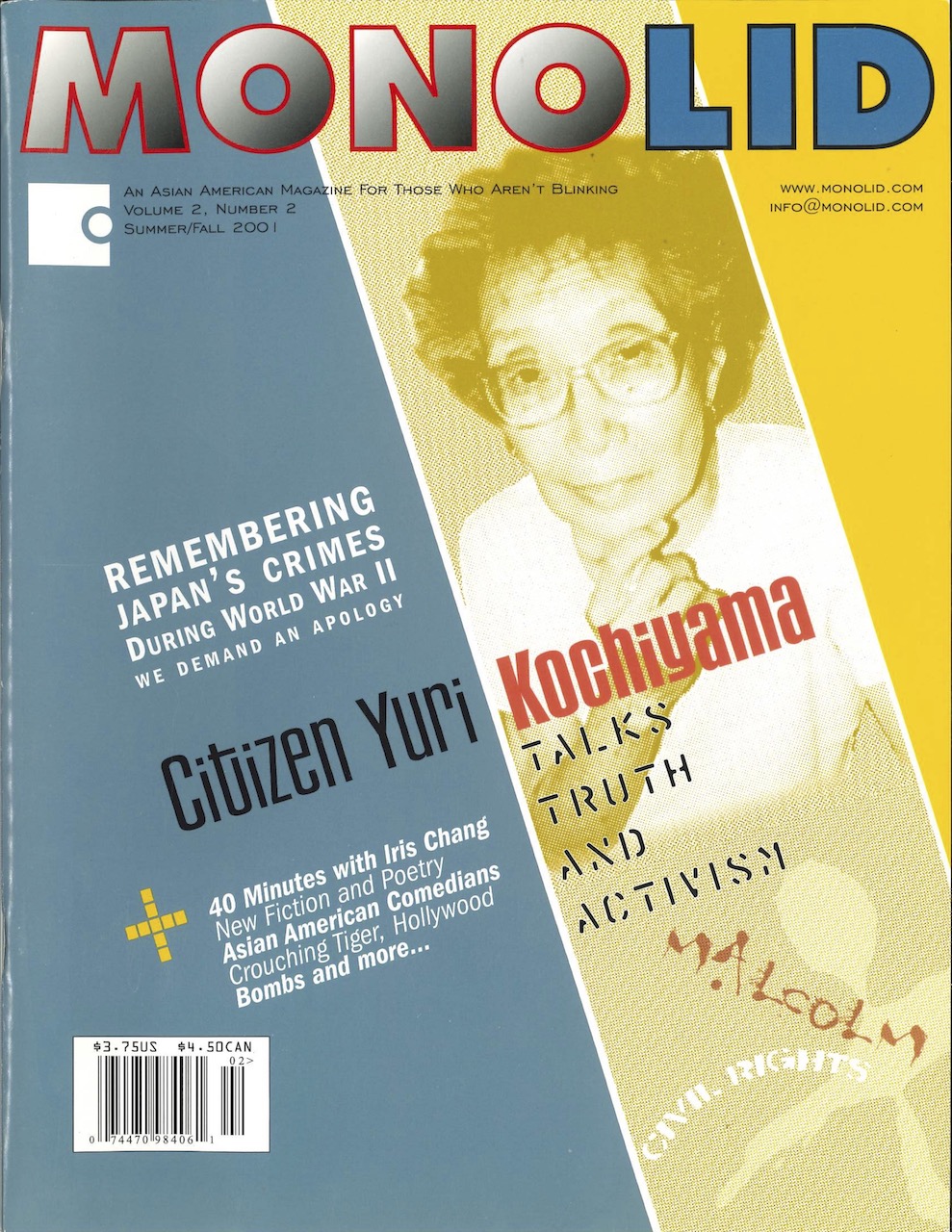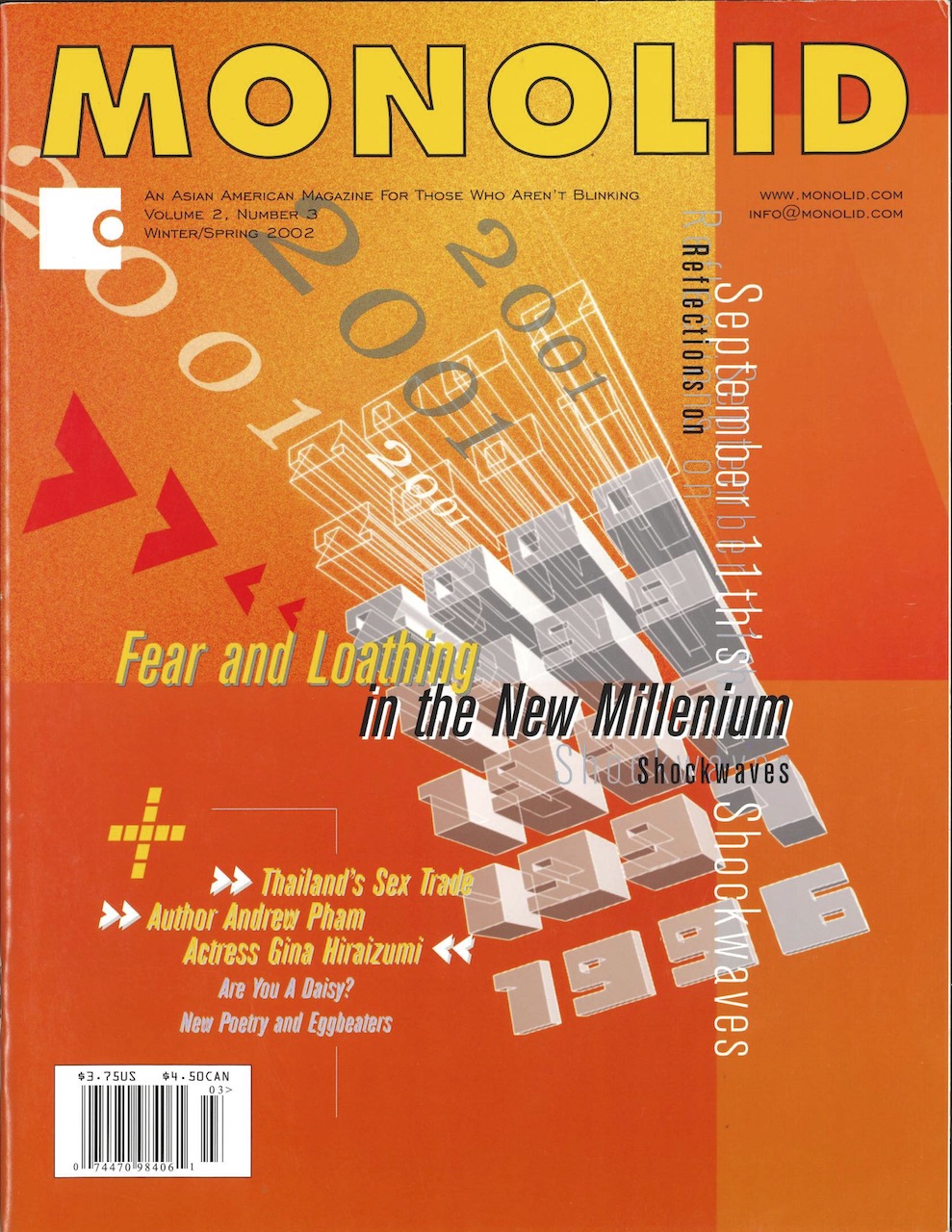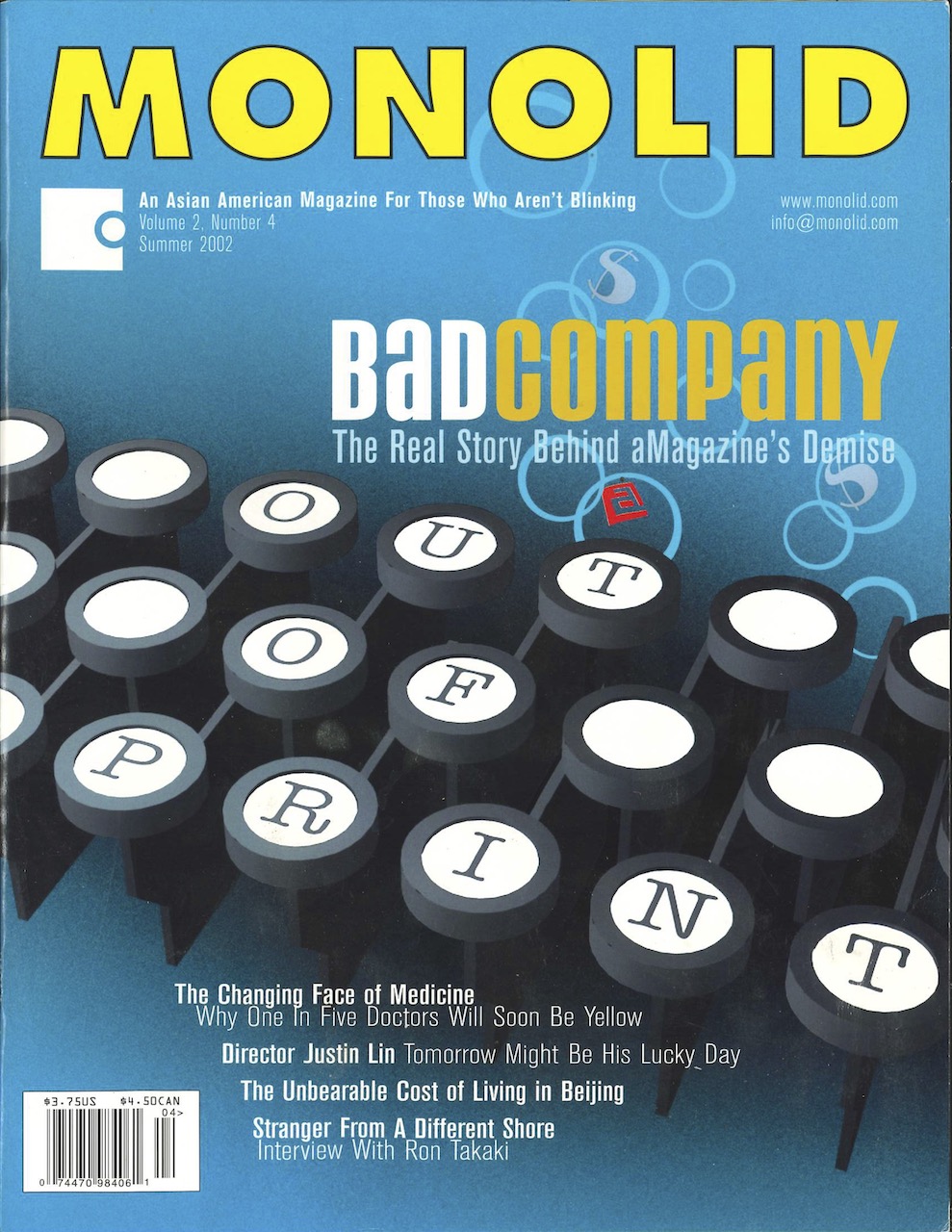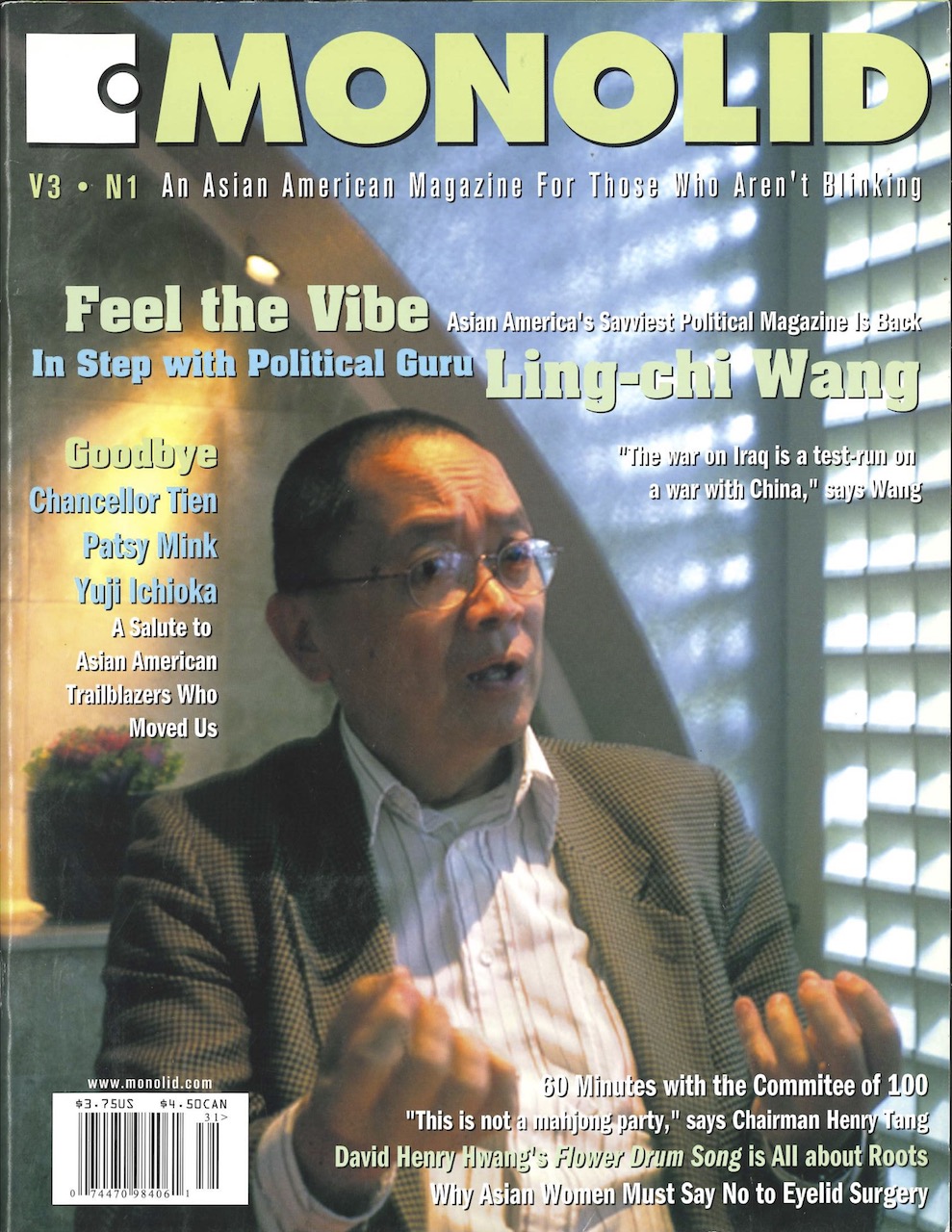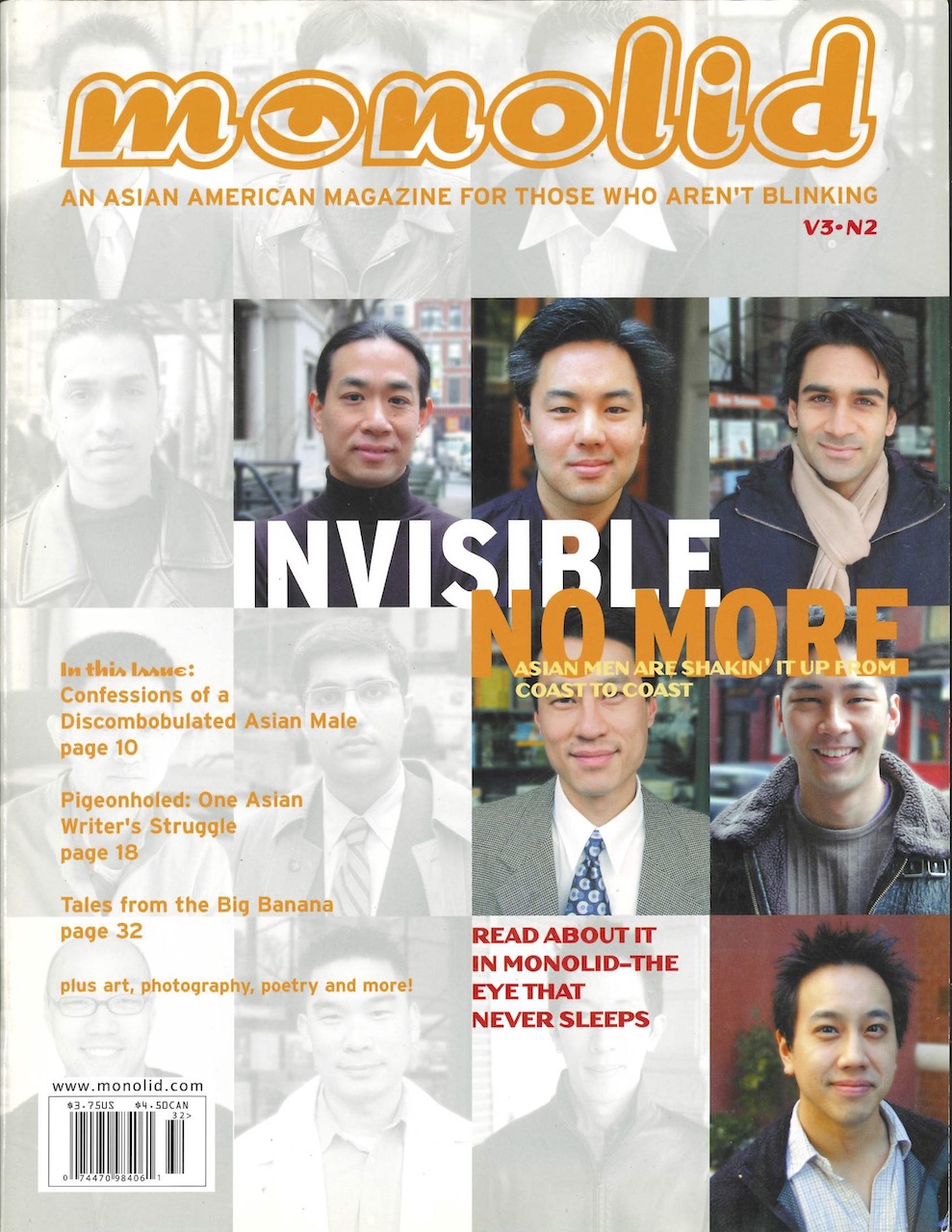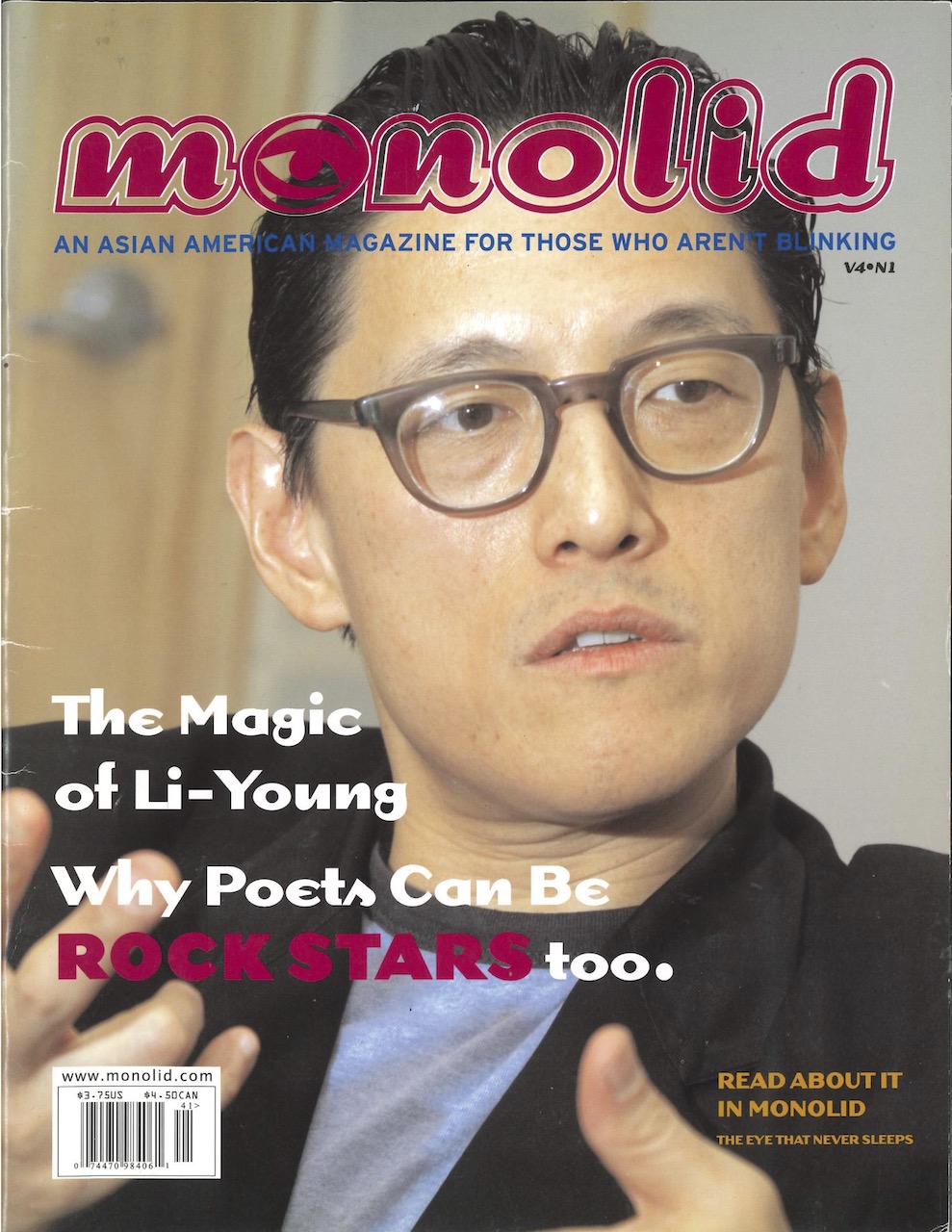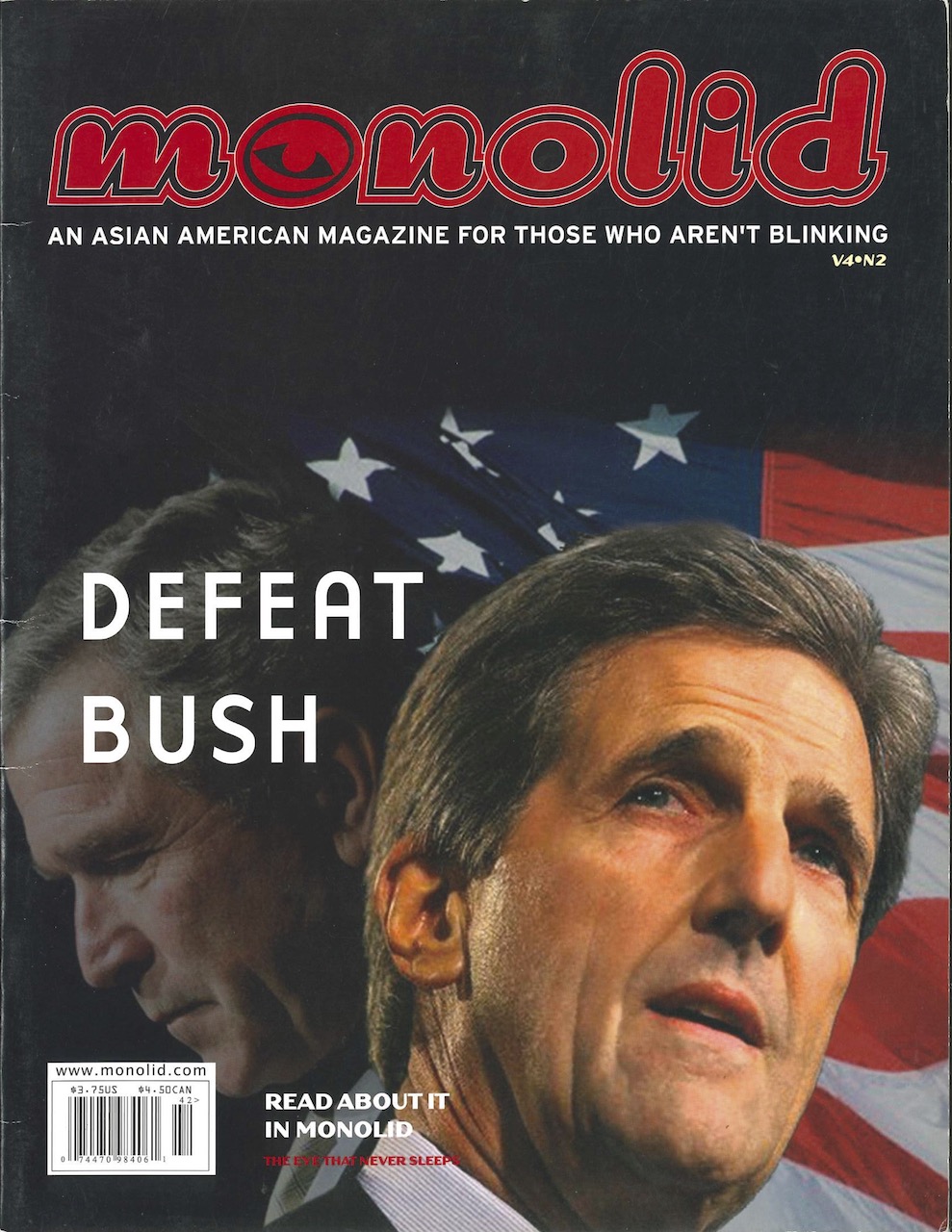

Monolid Magazine
The debut of Monolid in November 1999 realized Carrie’s vision of “an Asian American magazine for those who aren’t blinking.” Its mission, in her words:
to scope out gems of Asian American life and bring those pockets of brilliant subculture to a wider audience hungry for substantial fare on race, culture and media.
— Carrie Chang
Monolid tackled topics like Asian fetishism, mental health in Asian Americans, the rape of Nanking, and media portrayals of Asian men and women—all decades before it was in vogue to do so. Over its eight-year run, its distinctive voice and hybrid of political and literary content gained a nationwide following, including press notices in Glamour and 世界日報 (World Journal, a prominent Chinese-language newspaper in the U.S.).
For more, see Carrie’s first letter from the editor:
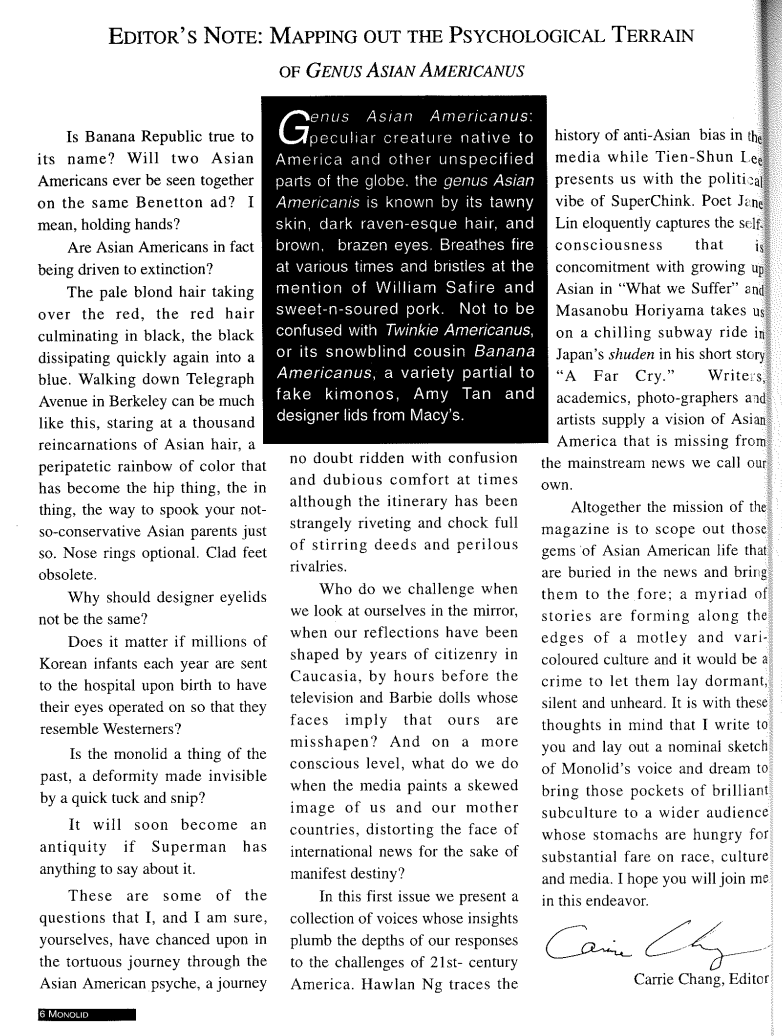
Why Monolid?
The magazine’s title was the subject of both confusion and controversy. As Carrie explained it:
A monolid describes an eye without an extra fold at the top. The name is a symbol of our struggle with the domination of Western aesthetics and sensibilities. Consider it a salutation from a fellow blinker glowing in the dark, or a back-atcha, cultural synecdoche for a race whose eyes have so often been caricatured with cruelty and derision and yet are still burning with the light of Asian dignity.
— Carrie Chang
For more, see how Carrie addressed the matter in subsequent issues:
I cooked up this magazine with hopes that Asians would stop annihilating their God-given features and, instead, put up a yellow fist.
— Carrie Chang
Covers
See Monolid’s striking covers below. We plan to digitize the magazines so that its rich trove of forward-thinking poetry, prose, photography and art can be appreciated anew.
